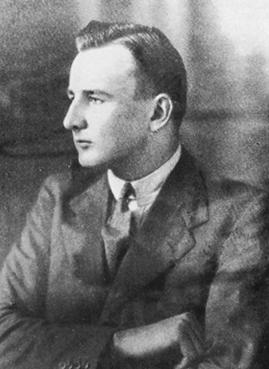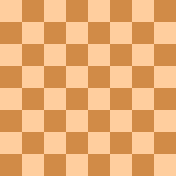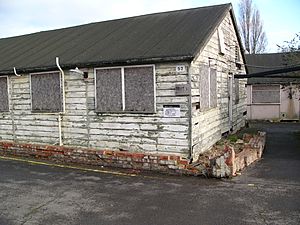Stuart Milner-Barry facts for kids
Quick facts for kids
Philip Stuart Milner-Barry
|
|
|---|---|
 |
|
| Born | 20 September 1906 Hendon, London
|
| Died | 25 March 1995 (aged 88) Lewisham, London
|
| Occupation | Codebreaker, civil servant, chess player |
| Title | |
Sir Philip Stuart Milner-Barry (born September 20, 1906 – died March 25, 1995) was a talented British chess player and writer. He was also a very important codebreaker during World War II. After the war, he worked as a civil servant for the government.
Milner-Barry played chess for England before and after the war. During World War II, he worked at Bletchley Park. This was a secret place where codes were broken. He led a team called "Hut 6" that decoded messages from the German Enigma machine. He was one of four top codebreakers who asked Prime Minister Winston Churchill for more help. After the war, he worked in the government's money department, the Treasury. Later, he helped manage the British honours system, which gives awards to people.
Contents
Early Life and School
Philip Stuart Milner-Barry was born in Hendon, London. He was the second of six children. His father, Edward Leopold Milner-Barry, was a schoolteacher who passed away in 1917.
Philip was very good at chess from a young age. In 1923, he won the first British Boys' Championship. He went to Cheltenham College and then earned a scholarship to Trinity College at Cambridge University. There, he studied old languages and moral sciences. He also played chess for Cambridge. At Cambridge, he became friends with another chess player, C.H.O'D. (Hugh) Alexander. Together, they created many chess puzzles.
From 1929 to 1938, he worked as a stockbroker in the city. He didn't enjoy this job very much. In 1938, he started writing about chess for The Times newspaper.
Early Chess Games
Milner-Barry first played in a big international chess tournament in London in 1932. The World Champion, Alexander Alekhine, won that tournament. Milner-Barry's best results in international chess were from 1937 to 1939. He played well in tournaments in Margate and Hastings. He usually finished in the middle of the strong players. Experts say his skill level was like a solid International Master, even though he never officially got that title.
He played for England in the international Chess Olympiads in 1937 and 1939. The 1939 tournament was in Buenos Aires, Argentina. It happened when Britain declared war on Germany in September 1939. Milner-Barry and his teammates, including Hugh Alexander and Harry Golombek, left the tournament early to go back to Britain.
Working at Bletchley Park
When they returned to Britain, Milner-Barry, Alexander, and Golombek all joined the secret Government Code and Cypher School (GC&CS) at Bletchley Park. This was the top-secret center for breaking enemy codes during World War II. Milner-Barry was asked to join by Gordon Welchman, who he knew from Cambridge. Milner-Barry then asked Hugh Alexander to join too.
Milner-Barry arrived in early 1940 and joined Welchman's team in "Hut 6". Their job was to break the Enigma code used by the German Army and Air Force.
In 1993, Milner-Barry said he never fully understood how the Enigma machine worked. But he was very good at studying the decoded messages. He noticed that the messages often had repeated phrases or ways of starting a letter. These repeated parts were called "cribs". A "crib" was a good guess for what a part of the secret message said in plain language. Finding good cribs was super important for Hut 6. This is because the Enigma code was mostly broken using "bombes". These were big machines that needed a "crib" to find the right settings to decode messages. In late 1940, Milner-Barry was put in charge of the "Crib Room".
He lived with Alexander, who worked in Hut 8. Hut 8 was similar to Hut 6 but worked on German Naval Enigma codes. Because they were good friends, they could easily share the limited time available on the "bombe" machines. By October 1941, Milner-Barry was the second-in-command of Hut 6, working under Welchman.
At this time, Bletchley Park needed more staff to help with the codebreaking. The leaders of GCCS seemed unable to get the help they needed. This problem affected both Hut 6 and Hut 8. Hut 8 was led by the famous mathematician Alan Turing, with Hugh Alexander as his deputy.
Together, Welchman, Milner-Barry, Turing, and Alexander decided to go straight to the top. They wrote a letter directly to the Prime Minister, Winston Churchill. In the letter, they explained their problems and asked for more resources. Milner-Barry was the one who delivered the letter to 10 Downing Street on October 21, 1941. The very next day, Churchill wrote back, saying: "Action this day: Make sure they have all they want on extreme priority and report to me that this has been done." Within a month, Bletchley Park had all the help they needed.
In late 1943, Milner-Barry became the head of Hut 6. By then, the team had grown to over 450 people. He stayed in charge until the end of the war. He faced new challenges as the Germans added more security to their Enigma machines. This included devices like the Enigma Uhr and a special "reflector" rotor that could be rewired.
His biography notes that he felt Hut 6 was always close to losing the ability to break Enigma. However, they kept breaking the codes until the war ended. This was largely because of his excellent leadership. The official history of Hut 6 praised his early work in finding "cribs." It also noted his great skills in managing people and dealing with problems as the head of the section.
After World War II
After the war, in 1945, Milner-Barry joined the Treasury. This is the government department that manages the country's money. In 1947, he married Thelma Tennant Wells. They had a son and two daughters. That same year, he was promoted to a higher role in the government.
He stayed with the Treasury until 1966. At 60, he had reached the usual retirement age for government workers. But he was asked to stay on in a special role. He helped manage the honours system. This system gives awards like knighthoods to people in Britain. In this role, he supported giving knighthoods to famous writers P. G. Wodehouse and Noël Coward. Milner-Barry finally retired in 1977. He received several awards for his work: the OBE in 1946 for his wartime efforts, the CB in 1962, and the KCVO in 1975.
Later Chess Contributions
| This section uses algebraic notation to describe chess moves. |
Milner-Barry kept playing chess after the war. He played in the Chess Olympiads in 1952 and 1956. The 1956 Olympiad was in Moscow, USSR. This trip was risky because Britain and the USSR were in the Cold War. Milner-Barry's secret knowledge about breaking codes would have been very interesting to the Soviets. The fact that Britain had broken German codes was kept secret until 1974.
He came in second place in the British Chess Championship in Hastings in 1953. This was his best result in British Championships.
He was the president of the British Chess Federation from 1970 to 1973. He played in the British Championship as late as 1978. He continued to play in club and county chess games even into his 80s. His obituary in The Independent newspaper said he had a "savagely effective attacking style." This style was made perfect by playing many "serious friendly games" against his old friend Hugh Alexander. In 1972, chess master George Koltanowski wrote that Milner-Barry's style was "very pleasing to spectators." This was because he always looked for dangerous moves and often found them.
His name is linked to four different ways to start a chess game, called chess opening variations:
Milner-Barry Variation
| a | b | c | d | e | f | g | h | ||
| 8 |

|
8 | |||||||
| 7 | 7 | ||||||||
| 6 | 6 | ||||||||
| 5 | 5 | ||||||||
| 4 | 4 | ||||||||
| 3 | 3 | ||||||||
| 2 | 2 | ||||||||
| 1 | 1 | ||||||||
| a | b | c | d | e | f | g | h | ||
- The Milner-Barry Variation in the Nimzo-Indian Defence (ECO E33): This starts with the moves 1.d4 Nf6 2.c4 e6 3.Nc3 Bb4 4.Qc2 Nc6.
- The Milner-Barry Gambit in the French Defence (ECO C02): This opening involves a sacrifice of a pawn with 1.e4 e6 2.d4 d5 3.e5 c5 4.c3 Nc6 5.Nf3 Qb6 6.Bd3 cxd4 7.cxd4 Bd7 8.0-0!? Nxd4 9.Nxd4 Qxd4 10.Nc3.
- The Milner-Barry Variation in the Petroff Defence (ECO C42): This starts with 1.e4 e5 2.Nf3 Nf6 3.Nxe5 d6 4.Nf3 Nxe4 5.Qe2 Qe7 6.d3 Nf6 7.Bg5 Nbd7.
- The Milner-Barry Variation in the King's Gambit (ECO C31): This opening starts with 1.e4 e5 2.f4 d5 3.Nc3.
Olympiad Results
Here are Milner-Barry's results when he played for England in chess Olympiads:
- Stockholm 1937: He played on board 3 and scored 3 wins, 5 losses, and 2 draws.
- Buenos Aires 1939: He played on board 3 and scored 3 wins, 0 losses, and 2 draws.
- Helsinki 1952: He played on board 3 and scored 2 wins, 3 losses, and 7 draws.
- Moscow 1956: He played on board 4 and scored 5 wins, 5 losses, and 2 draws.
Overall, he won 12 games, lost 13, and drew 13, scoring 18.5 points out of 38 games.
Final Years
In 1985, Milner-Barry strongly defended the good name of Gordon Welchman. Welchman had been criticized after his death for sharing details about the secret work of Hut 6 during the war. In 1992, Milner-Barry was part of a group that delivered a petition to the Prime Minister. This petition asked the government to help save Bletchley Park, which was in danger of being torn down.
Philip Stuart Milner-Barry passed away on March 25, 1995, in Lewisham Hospital, London. A special service was held for him at Westminster Abbey on June 15.
There is a meeting room named after him at the Civil Service Club in London.
See also
 In Spanish: Stuart Milner-Barry para niños
In Spanish: Stuart Milner-Barry para niños


